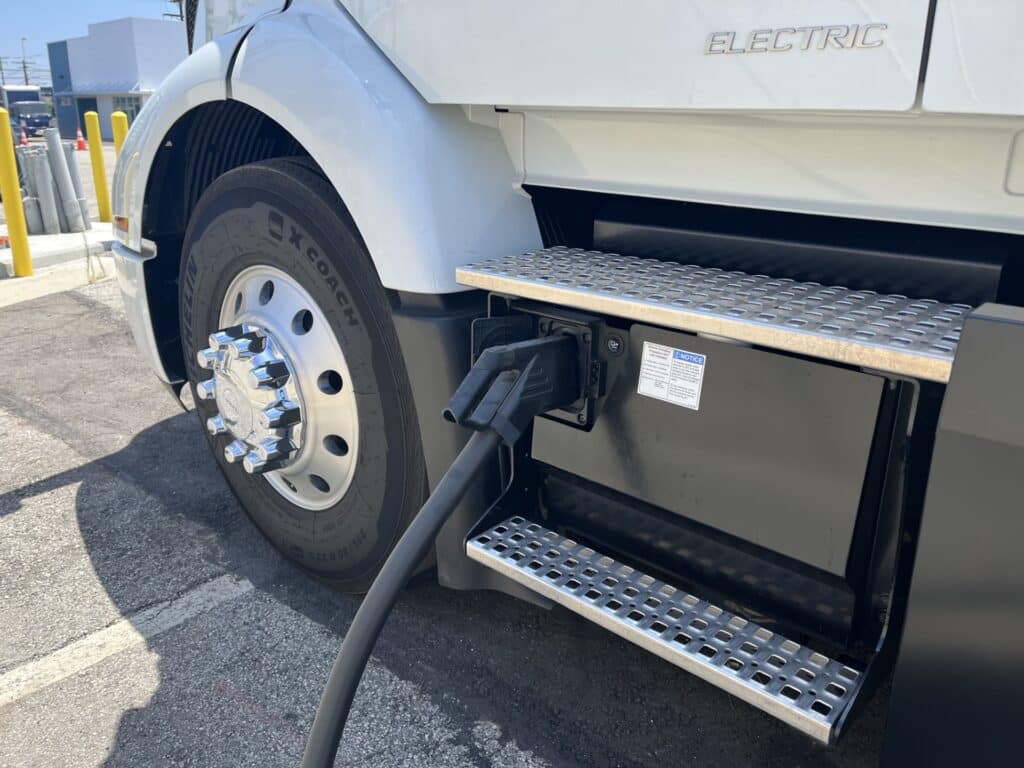Challenges for Electric Medium and Heavy-duty Trucks
The electrification of medium and heavy-duty trucks marks a significant shift in the transport industry, offering substantial savings on fuel and maintenance costs. This transition helps reduce carbon emissions, contributes to environmental conservation, and allows companies to meet regulatory standards in CARB states and receive tax benefits.

Range and charger anxiety
However, ‘range anxiety’ and ‘charger anxiety’ are prevalent among organizations, causing hesitation in this transition. Range anxiety refers to the fear that the electric vehicle (EV) will run out of power before reaching its destination. In contrast, charger anxiety stems from concerns about the availability and accessibility of charging stations.
Understanding how electric truck charging works and foreseeing infrastructural developments can help alleviate these anxieties. Medium-duty trucks, typically used for local and last-mile deliveries and regional mid-haul trips, can charge overnight using Level 2 power, ranging from 7.6 kWh to 19 kWh. In contrast, heavy-duty trucks, responsible for regional and long-haul deliveries, require a more robust charging infrastructure, featuring DC fast chargers.
Various charging types: overnight, destination, and on-the-move
DC fast chargers draw power from either the electrical grid or alternative power sources and are usually located at private sites, public spaces, or contract charging depots. These chargers’ site hosts, often from tourism, transportation, business, and community sectors, offer various charging types: overnight, destination, and on-the-move.
Overnight charging usually occurs at a hub or depot, with off-peak rates from electrical utility providers making it the most cost-effective option. Charging an electric truck overnight typically takes six to eight hours, using 50 to 150 kW of low DC power.
Destination charging happens during loading or unloading at retail locations, ports, and distribution centers, typically taking about 30 minutes using 150 to 350 kW of DC power.
On-the-move charging is presently less feasible due to the limited availability of public charging infrastructure. It also presents the risk of grid crashes during peak usage time, and it may necessitate waiting in long lines or driving long distances to find electric truck charging stations.
A megawatt-scale charging system under development
Looking towards the future of electric truck charging, projects like the National Renewable Energy Laboratory’s (NREL) 1+ MW aim to develop a megawatt-scale charging system that can charge vehicles in less than 30 minutes. This pioneering project uses real-world truck data to develop charge-control techniques to power multiple vehicles simultaneously without compromising the electrical grid’s stability.
Benefits and challenges
Switching to zero-emission trucking offers several benefits. Trucks with an electric powertrain have regenerative braking, which extends brake life and increases range, saving more money over the long haul. Moreover, they have lower centers of gravity, reducing rollover risk and enhancing driver safety.
However, challenges persist. The charging infrastructure needs massive expansion, electricity prices can vary regionally, and the initial costs of electric trucks are high. There may also be a need for driver training. Despite these challenges, transitioning to electric trucks is a significant step towards a more sustainable future.
